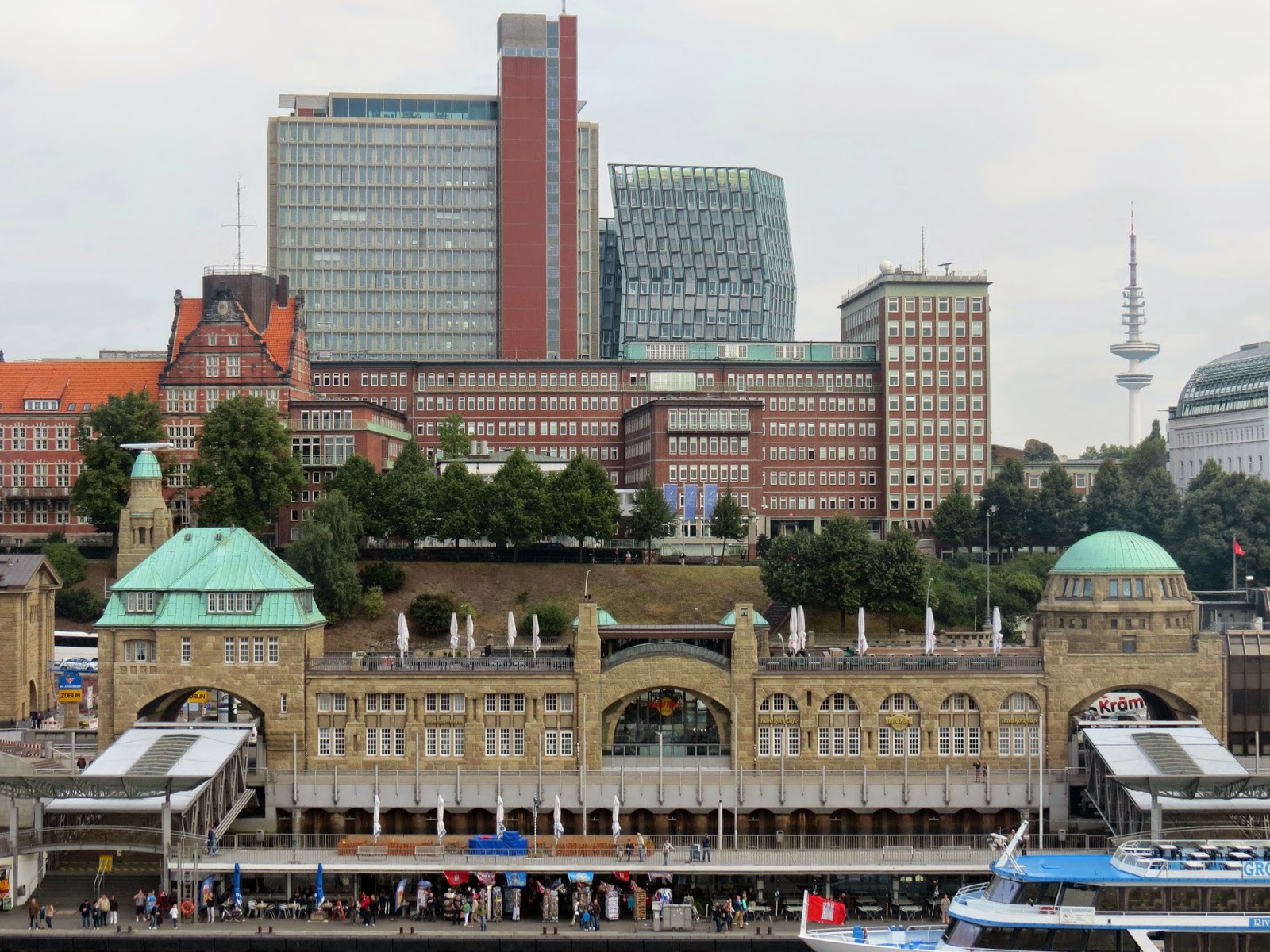It
has been an exhausting but exhilarating day touring in St Petersburg, Russia, and we are preparing for a second day of
touring tomorrow. But for now I will
briefly cover Rønne, Denmark; Gdansk,
Poland; and our day at sea. I will then be
caught up to our current port.
Thursday, 28 August
2014
Rønne, Bornholm,
Denmark
We
arrive in the port of Rønne on the
island of Borholm at 10am, about two
hours behind schedule, because of yesterday’s delays. But the Captain has decided to extend our
stay two hours later and still get to the next port on time. Bornholm
is a large island in the Baltic Sea that has changed hands between Sweden and
Denmark over the centuries, but today belongs to Denmark even though it is
geographically closer to Sweden. It
takes about five hours, by a combination of hydrofoil and bus, to reach
Copenhagen.
Rønne, the main city
on the island, is home to about 16,000 people, and survives on fishing and
tourism. Our tour takes us out of the
city and across the island to two small, picturesque fishing villages: Gudhjem
(the home of God), and Svanake. The former is home to about 800 residents—our
tour guide was born here but today makes his home in Copenhagen—the latter
about 1,100. Both villages overlook the
sea and contain many well-maintained half-timbered houses and souvenir and
craft shops. Svaneke even has its own beer brewery. This is a very low-key tour; our guide has a
droll sense of humor about his native land, and we get to enjoy an hour
in each town to explore and shop on our own.
There is an interesting pottery shop in Gudhjem (Cassiusclay) and a glass-blowing workshop in Svanake.
Both villages enjoy a mild climate and are popular with local tourists
as well as visitors from cruise ships.
Saling into Ronne Harbor
Traditional Round Church on Bornholm
Gudjheim Village
Svaneke Rooftops
Will at the Bus Stop in Svaneke
Friday, 29 August 2014
Gdynia/Gdansk, Poland
On
Friday morning, the Prinsendam docks
in Gdynia, part of the urban
agglomeration of Gdansk, the largest
port in Poland. Although Gdansk has always been a cultural
center, because of its military importance it was bombed to the smithereens by
both the Germans and the Allies during WWII.
Close to 95% of the city was destroyed, but the old city center has been
restored to its colorful and pristine condition (perhaps a little too perfect
and pristine). Gdansk is also the home of the Solidarity movement and there are
many political monuments throughout the city.
The ride from Gdynia to Gdansk takes about 20 minutes. A bus and walking tour takes us to the
highlights of the city and we even have about an hour of free time for
exploring on our own.
We
are back on the ship in time for lunch in the Lido Buffet and a good power nap
in the afternoon before another dinner.
For some reason, dinner service is very slow and sloppy tonight, quite
unlike the usual on Holland America.
Solidarity Memorial
Gdansk Old Town
Gdansk Old Town
Gdansk Old Town
Saturday, 30 August 2014
Sailing from Gdansk to St Petersburg: Day at Sea
Today
is a welcome day at sea, with nothing much to do except eat and enjoy the
beautiful weather. We have a leisurely
breakfast in the Pinnacle Grill and then it’s time for the Mariner’s Champagne
Brunch in the Main Dining Room. The
Mariner’s Club is Holland America’s repeat voyagers’ organization; the more
days you accumulate, the more benefits you receive. On this cruise I will achieve 4-star level,
requiring the equivalent of 200 sea days (and/or money spent aboard the ships);
Will is a two-star mariner, but should be close to three-star level. Four-star used to be the highest level, but
HAL has recently introduced a five-star benefit—but it takes 400 days to
achieve (quite a jump from the 200-day four stars).
Tonight
is the second scheduled formal night—you may recall that the first one was made
optional—and there will be one more on the last night of the cruise. Not too many people wear tuxedos or gowns,
and we feel quite comfortable in dark blazers and ties.









__03.jpg)












































